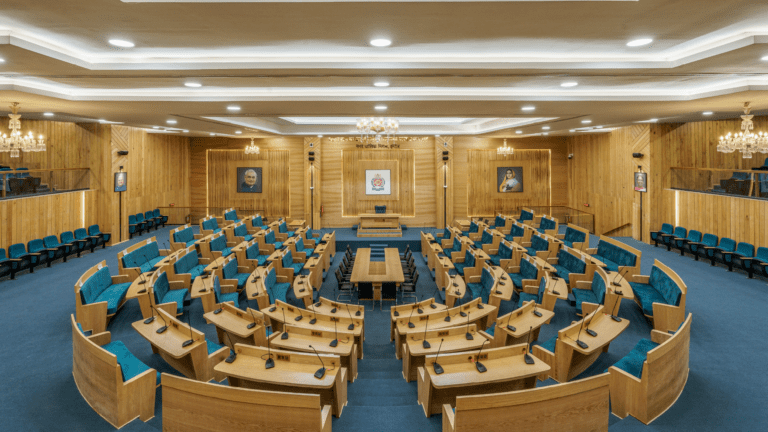The biophilic qualities of wood materials and wood-frame construction (WFC) were highlighted at the Second Annual China Healthy Building Conference that took place on September 8, 2020, at the China Academy of Building Research (CABR). This conference is the most prestigious healthy building event in China, jointly organized by seven national-level organizations that are key players in the advancement of China’s healthy building development, including, the China Healthy Building Alliance, CABR, the Chinese Academy of Urban Sciences, the Chinese Center for Disease Control and Prevention, the National Institute of Building Science, Tsinghua University and Beijing University.
FII China was invited by the conference organizer to introduce the role of wood in healthy building applications. Organized with a live broadcast over WeChat with the support of lezhibo.com, the event reached more than 2.6 million views, showing a strong public interest in this area. Mr. Cui Kai, Fellow of the Chinese Academy of Engineering, also complimented WFC’s strengths with green and healthy building in his presentation that included two wood-frame public building projects in China designed by his team.
The concept of “Healthy Building” began to circulate in China when the CPC Central Committee and the Chinese State Council issued the “Healthy China 2030 Planning Guidelines” in 2016, which is a systematic strategy to, “promote a healthy lifestyle, develop a healthy environment, and establish a healthy industry,” in the years leading up to 2030. In 2017, MOHURD issued the 13th Five-Year-Plan for building energy conservation and green development, while CABR took the lead in publishing China’s first Healthy Building Label.
At the onset of its implementation, the healthy building system was slow to progress in China due to health factors being less of a priority in the construction market. Before 2020, only around a dozen buildings applied for certification under the Healthy Building Label each year. The COVID-19 pandemic has significantly impacted people’s awareness of health issues in their environment and shifted their attention towards the factors that can determine healthy living conditions.
More than ever, the topic of health is playing a leading role in the Chinese construction industry. The number of projects applying for the Chinese Healthy Building Label grew exponentially, and CABR is working on publishing 10 new specifications categorizing healthy building labels by application types such as healthy hospitals, healthy tourism and resorts, and healthy products and materials.
The use of wood in construction is proven to be an advantageous solution for people’s health and well-being, both physically and mentally. Research shows that the biophilic properties of wood can have a positive influence on nerves and reduce stress levels from touch, sight and smell. Volatile substances or the scent released by wood and essential oils extracted from wood are shown to relieve mental stress and can help soothe some symptoms of respiratory diseases. FII China will continue to advocate for its application in the Chinese healthy building system and construction sector with relevant Chinese partners.



